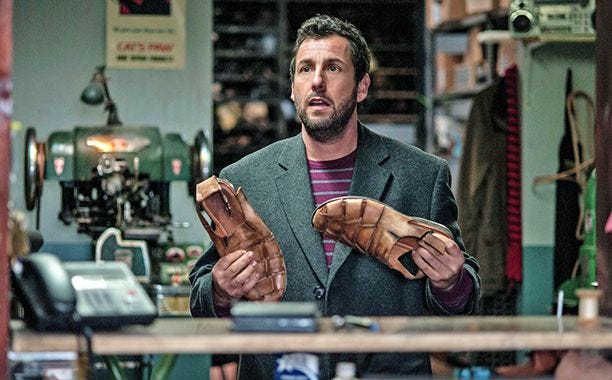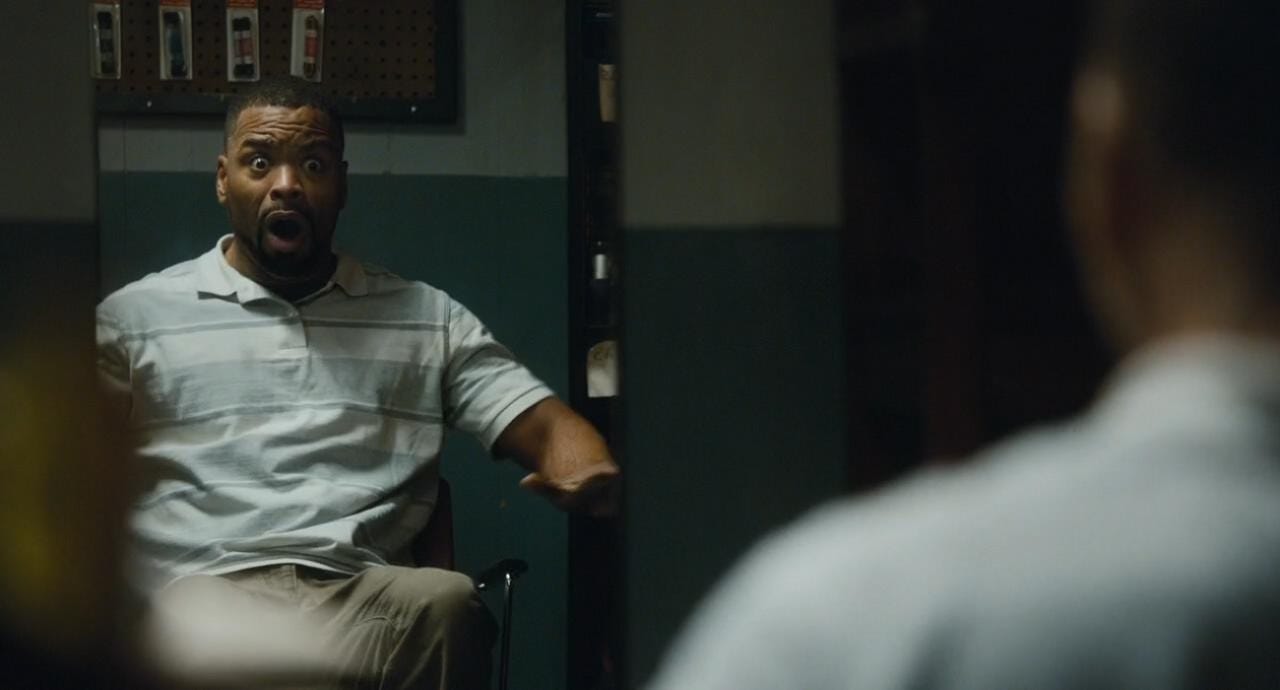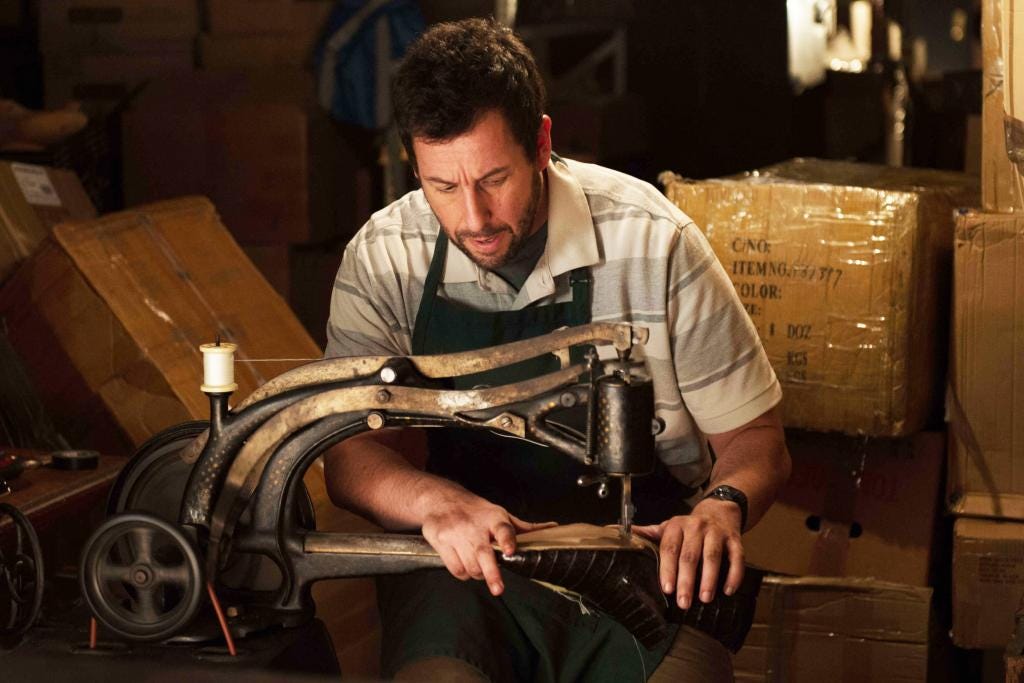During prison, I saw that director Tom McCarthy’s “Spotlight” won Best Picture at the Oscar. And, gradually, I learned that had movie came after another, less-heralded McCarthy effort. I’m referring to the well-meaning curio “The Cobbler”, a surprising lowlight within the filmography of Adam Sandler, an entire career dotted with lowlights. While I was waiting for my case to be settled while in lock-up, “The Cobbler” was being booed out of the Toronto Film Festival and shuffled through an intentionally forgotten release. I missed the Oscars that year, but I don’t think McCarthy mentioned this one while on stage.
Sandler, dialed down in his dramatic mode, plays a downtown Manhattan cobbler who has to deal with a small raft of Special Guest Stars who need their shoes doctored up. He has no personal life, he doesn’t get out much, and his closest buddy (regular Sandler collaborator Steve Buscemi) is the guy with a shop next door. It’s a weirdly common onscreen portrayal of Jewish men: he’s a workaholic who lives with his mother, and everyone is waiting for him to meet a woman even though (as is always unspoken) he probably couldn’t afford a lifestyle for two.
Through an equipment breakdown, he ends up searching around in his basement for a new stitching machine. He finds an old dusty one, a device we saw in a seemingly-unrelated prologue set in 1903. As you could guess, it’s magical - once he puts on a pair of shoes sewed up by this device, he literally becomes them. Or, I guess, becomes a clone of them, since the original dude (or lady!) is still out there. Finally, this unassuming professional can walk in someone else’s shoes.
“The Cobbler” settles into an episodic structure where Sandler heals those who surround him by impersonating them and making what we are to presume are far more responsible, selfless choices. The element of a white Jewish savior properly embodying the spirit of another person, particularly when they’re a minority from a lower social strata, is… loaded, to be certain. You could argue as to whether this works or not, if it’s paternalistic. But it seems clear everyone knows this is something of a creative gamble, and in those regards, a swing and a whiff like this merits a bit of respect. It does result in sequences like when Method Man, playing Sandler playing Method Man’s character (a hothead gangbanger), is giving a performance where he is a Black actor playing a white man’s well-meaning interpretation of a popular Black stereotype. As the saying goes, it’s a choice!
Rooted within the social complexities of an otherwise dopey story (one that, in its third act, almost leans into superhero territory) is the idea of an extreme form of code switching. In concrete terms, “code switching” refers to the shifting of language within the same conversation. But in more colloquial terms, it means switching between conversational dialects during shifting social circumstances. Within the movie, code switching is something Sandler learns over the course of his adventure, the better to remain in hiding. Hiding his Judaism, if you will.
Code switching is entirely necessary for anyone in a multiracial, multicultural environment, moreso one with heightened tensions like prison. You’re dealing with a majority demographic of Spanish speakers and Black men, and the whole of us don’t have to code switch between each other. But if we need anything, we have to code switch with the guards. The prison typically hires from the local community, so if they’re closer to a metropolitan area, there will be a cultural mix of white, Black and Hispanic. But many institutions exist in more rural areas, so they’ll attract residents of rural American communities. And many will have to code switch when those are the types of guards and officials ordering you around.
Racial divisions seem more present every day – when I was in prison, I heard more and more about white grievance, white bitterness. As a Latino, I was entirely unprepared for that ongoing heel turn. But what I noticed when I was down was a key distinction – white people in prison never code switched. They never felt like that had to – the very concept of making a social sacrifice was lost on these men. Frankly, if a lot of them learned to code switch, prison would have been a lot easier for them. In a minority-majority environment, a white man not code switching was almost like a sort of performative whiteness. Not a single thing could force them to betray the humility required of you in prison – not coincidentally, many of these men carried the sense of incredulity that they were incarcerated, as if looking at all the Blacks and Hispanics and wondering, why do I belong here? I suppose that’s a version of the Critical Race Theory I kept hearing about when I was down, but when I looked at white men in prison, I think it more accurately fit under the term “survival.”







This was shot in my neighborhood, so of course, I loved it :)